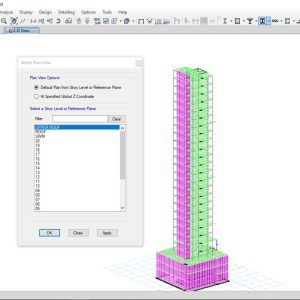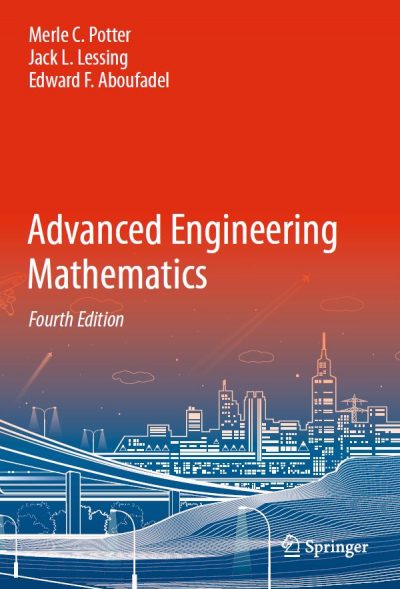-
 MS Office Professional Essential Training$200.00
MS Office Professional Essential Training$200.00 -
 Primavera P6 Professional Training Course$250.00
Primavera P6 Professional Training Course$250.00 -
Product on sale
 20+ Story High Rise BuildingOriginal price was: $39.99.$9.99Current price is: $9.99.
20+ Story High Rise BuildingOriginal price was: $39.99.$9.99Current price is: $9.99. -
 CSI SAFE Essential Training Course$250.00
CSI SAFE Essential Training Course$250.00 -
 CSI ETABS Essential Training Course$350.00
CSI ETABS Essential Training Course$350.00
The purpose of this book is to introduce students of the physical sciences to several mathematical
methods often essential to the successful solution of real problems. The methods chosen are
those most frequently used in typical physics and engineering applications. The treatment is not
intended to be exhaustive; the subject of each chapter can be found as the title of a book that
treats the material in much greater depth. The reader is encouraged to consult such a book should
more study be desired in any of the areas introduced.
Perhaps it would be helpful to discuss the motivation that led to the writing of this text.
Undergraduate education in the physical sciences has become more advanced and sophisticated
with the advent of the space age and computers, with their demand for the solution of very difficult
problems. During the recent past, mathematical topics usually reserved for graduate study
have become part of the undergraduate program. It is now common to find an applied mathematics
course, usually covering one topic, that follows differential equations in engineering and
physical science curricula. Choosing the content of this mathematics course is often difficult. In
each of the physical science disciplines, different phenomena are investigated that result in a
variety of mathematical models. To be sure, a number of outstanding textbooks exist that present
advanced and comprehensive treatment of these methods. However, these texts are usually written
at a level too advanced for the undergraduate student, and the material is so exhaustive that
it inhibits the effective presentation of the mathematical techniques as a tool for the analysis of
some of the simpler problems encountered by the undergraduate. This book was written to provide
for an additional course, or two, after a course in differential equations, to permit more than
one topic to be introduced in a term or semester, and to make the material comprehensive to the
undergraduate. However, rather than assume a knowledge of differential equations, we have
included all of the essential material usually found in a course on that subject, so that this text
can also be used in an introductory course on differential equations or in a second applied course
on differential equations. Selected sections from several of the chapters would constitute such
courses.
Ordinary differential equations, including a number of physical applications, are reviewed in
Chapter 1. The use of series methods is presented in Chapter 2. Subsequent chapters present
Laplace transforms, matrix theory and applications, vector analysis, Fourier series and transforms,
partial differential equations, numerical methods using finite differences, complex variables,
and wavelets. The material is presented so that more than one subject, perhaps four subjects,
can be covered in a single course, depending on the topics chosen and the completeness of
coverage. The style of presentation is such that the reader, with a minimum of assistance, may
follow the step-by-step derivations from the instructor. Liberal use of examples and homework
problems should aid the student in the study of the mathematical methods presented.
About this book
This book is designed to serve as a core text for courses in advanced engineering mathematics required by many engineering departments. The style of presentation is such that the student, with a minimum of assistance, can follow the step-by-step derivations. Liberal use of examples and homework problems aid the student in the study of the topics presented. Ordinary differential equations, including a number of physical applications, are reviewed in Chapter One. The use of series methods are presented in Chapter Two, Subsequent chapters present Laplace transforms, matrix theory and applications, vector analysis, Fourier series and transforms, partial differential equations, numerical methods using finite differences, complex variables, and wavelets. The material is presented so that four or five subjects can be covered in a single course, depending on the topics chosen and the completeness of coverage.
Incorporated in this textbook is the use of certain computer software packages. Short tutorials on Maple, demonstrating how problems in engineering mathematics can be solved with a computer algebra system, are included in most sections of the text. Problems have been identified at the end of sections to be solved specifically with Maple, and there are computer laboratory activities, which are more difficult problems designed for Maple. In addition, MATLAB and Excel have been included in the solution of problems in several of the chapters.
There is a solutions manual available for those who select the text for their course. This text can be used in two semesters of engineering mathematics. The many helpful features make the text relatively easy to use in the classroom.
-
 Turnitin Instructor with AI Detection$70.00 – $130.00
Turnitin Instructor with AI Detection$70.00 – $130.00 -
 SmartPLS 4.1 Processional | Lifetime activation key$60.00
SmartPLS 4.1 Processional | Lifetime activation key$60.00 -
 EndNote Lifetime for Windows /Mac Software Full Version$8.00 – $15.00
EndNote Lifetime for Windows /Mac Software Full Version$8.00 – $15.00 -
![2019 Advanced Engineering Mathematics (4th edition) Potter, Merle C., Lessing, Jack, Aboufadel, Edward F. 11 IBM SPSS Statistics v30 | v29 [Lifetime Activation with key]](https://civilmdc.com/wp-content/uploads/2022/03/IBM-SPSS-30-Key-300x300.jpg) IBM SPSS Statistics v30 | v29 [Lifetime Activation with key]$15.00 – $45.00
IBM SPSS Statistics v30 | v29 [Lifetime Activation with key]$15.00 – $45.00 -
 LinkedIn ALL COURSES LIFETIME Warranty$25.00
LinkedIn ALL COURSES LIFETIME Warranty$25.00 -
Product on sale
 REF-N-WRITE | Premium Account Lifetime ActivationOriginal price was: $45.00.$22.00Current price is: $22.00.
REF-N-WRITE | Premium Account Lifetime ActivationOriginal price was: $45.00.$22.00Current price is: $22.00. -
 QuillBot’s paraphrasing tool | Premium Account 6 month | + WARRANTY$12.00
QuillBot’s paraphrasing tool | Premium Account 6 month | + WARRANTY$12.00 -
 Grammarly Premium Account 6 Month |12 month$20.00 – $35.00
Grammarly Premium Account 6 Month |12 month$20.00 – $35.00 -
 TURNIT1N Student (Plagiarism Checker) – 6 Month | 1 Year | 2 Years | 3 Years | 4 Years | LifeTime$15.00 – $200.00
TURNIT1N Student (Plagiarism Checker) – 6 Month | 1 Year | 2 Years | 3 Years | 4 Years | LifeTime$15.00 – $200.00



